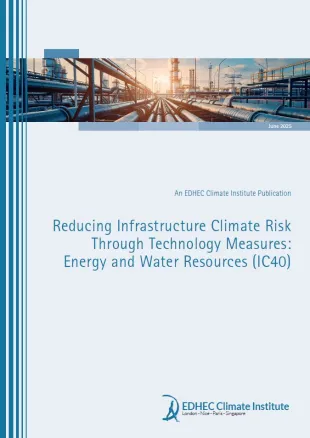
Reducing Infrastructure Climate Risk Through Technology Measures: Energy and Water Resources (IC40)
This paper presents a literature review and assessment of key strategies to decarbonise energy and water resource assets and to increase their resilience to physical climate risks.
